This article has been reviewed according to Science X's editorial process and policies. Editors have highlighted the following attributes while ensuring the content's credibility:
fact-checked
peer-reviewed publication
trusted source
proofread
Orchid without pollinating bumblebee on island finds wasp, blurring orchid species boundary
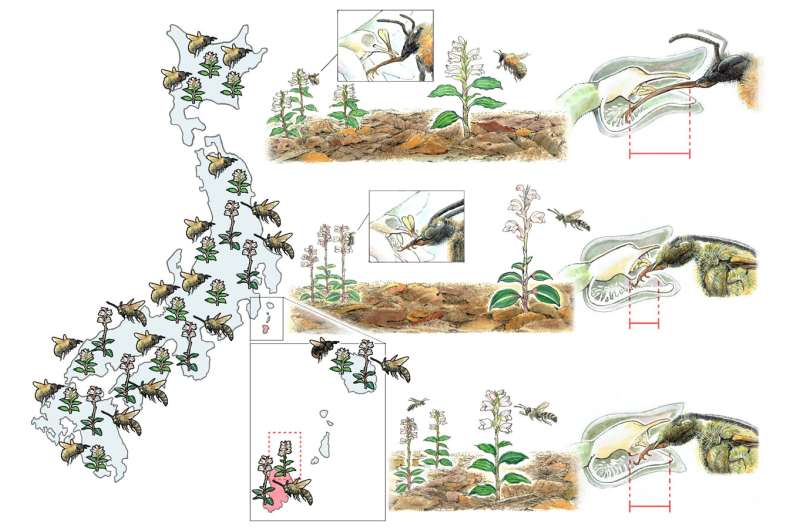
Because the bumblebee that an orchid relies on for pollination does not exist on a remote island, the plant gets pollinated by an island wasp. Kobe University researchers found that this came at the cost of being hybridized with another orchid species adapted to being pollinated by the wasp. The finding showcases how plants in ecological relationships adapt to changing circumstances.
Remote islands have been exciting study grounds for biologists since at least the days of Darwin. When studying ecological relationships between different species, the differences between mainland and island can hint at how such relationships evolve and what this means for the participating species. This is what piqued plant scientists' curiosity when they discovered Goodyera henryi, an orchid which on mainland Japan is pollinated exclusively by a very specific bumblebee, on remote Japanese Kozu Island where the bumblebee doesn't exist.
For Kobe University Professor Suetsugu Kenji this fit perfectly into his long-term effort to understand the dynamics of island biology and evolutionary processes. The orchid specialist says, "The combination of our expertise, access to the location, and our interdisciplinary methodology puts us in a special position to study the impact of bumblebee absence on orchid evolution in this context."
With his team he studied the pollination of the orchids both on mainland Japan and on Kozu Island, and also employed genetic analysis to learn about the relationship patterns between the different populations of the plants.
-
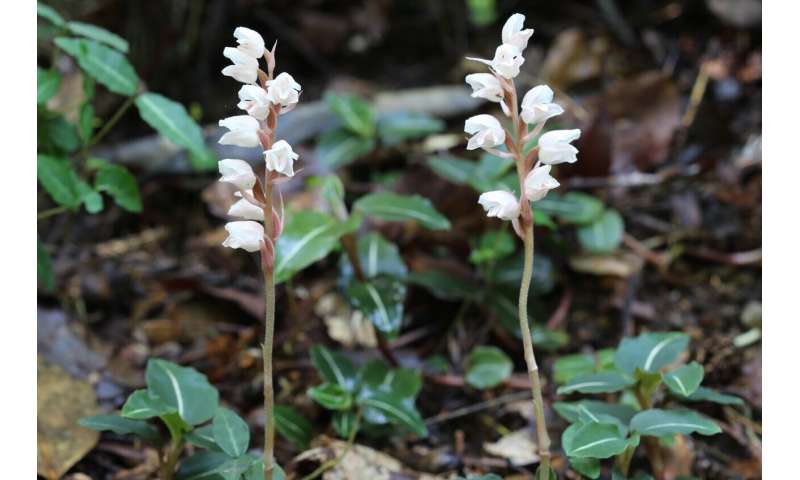
Goodyera simils on mainland Japan. Credit: Kitada Yoshiaki -
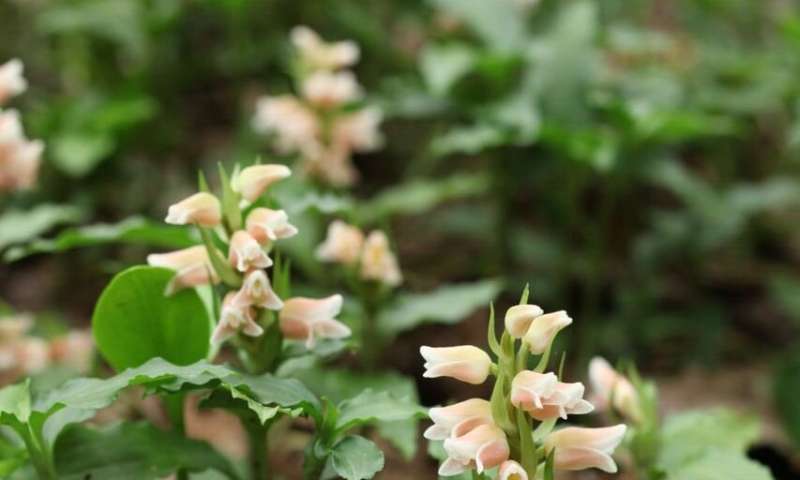
Goodyera henryi on mainland Japan. The flower tube is longer than that of Goodyera simils. Credit: Kitada Yoshiaki
The results, now published in the journal New Phytologist, came with a surprise. The researchers first noticed that, on Kozu Island, Goodyera henryi is pollinated by the same scoliid wasp as the closely related orchid Goodyera similis, also found on the island.
While in orchids the length of the flower tube closely matches the length of the pollinating insect mouthparts, the island wasp has much shorter mouthparts than the bumblebee that pollinates Goodyera henryi on the mainland. The researchers also noticed that the orchid's flower tube was shorter on the island than the mainland.
The surprise came when they compared the genetic makeup of the orchids. Suetsugu explains, "All specimens initially categorized as Goodyera henryi on Kozu Island are hybrids, leading to the absence of the pure species on the island."
The research team speculate that, when Goodyera henryi first arrived on the island, it must have been visited by a wasp by chance, or precisely because the plant was not being visited by the bumblebee.
While the wasp's mouthparts are shorter than the bumblebee's and therefore unable to carry Goodyera henryi pollen from one flower to another, if the insect had just before visited its usual orchid, Goodyera simils, pollen from that plant might have ended up on the new arrival, hybridizing it. This changed the appearance of the orchid such that it was now able to attach pollen to its substitute pollinator and thus establish itself on the island in its new hybridized form.
"The most exciting aspect of this result is probably the implication for our understanding of how plants can adapt and evolve in response to changing ecological conditions, particularly in the context of declining pollinator populations," says the Kobe University researcher.
-
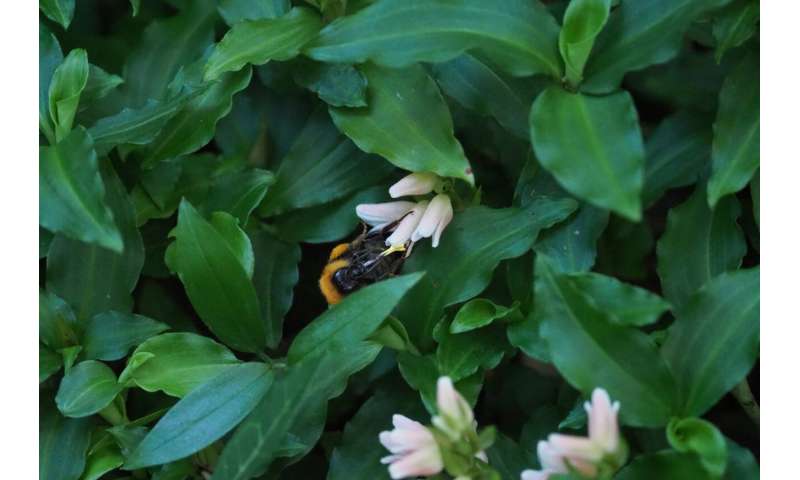
A bumblebee on Goodyera henryi on mainland Japan with pollen clusters attached to the long mouthparts. Corresponding to the mouthparts, the pollen cluster is also long. Credit: Shitara Takuto -
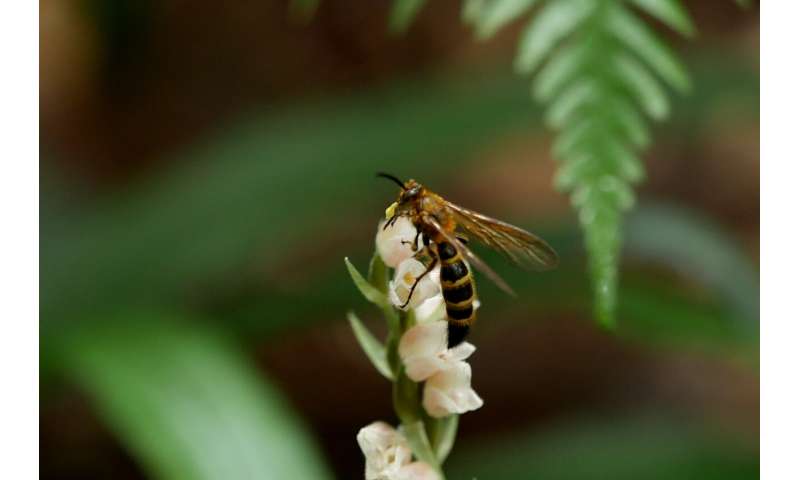
A scoliid wasp visiting "Goodyera henryi" on Kozu Island, with pollen clusters attached to the short mouthparts. Corresponding to the mouthparts, the pollen clusters are also short. Credit: Shitara Takuto
Suetsugu says that this has implications beyond the academic study of evolutionary dynamics. Bumblebee species are on a global decline, but because bee removal experiments are unethical and impractical, it has been difficult to predict the ecological consequences.
Explaining what the results mean he says, "Even if bumblebee-dependent plants successfully engage substitute pollinators amidst the global decline of long-tongued bumblebees, the maintenance of plants' species boundaries could be compromised due to the sharing of pollinators via hybrid formation."
More information: The absence of bumblebees on an oceanic island blurs the species boundary of two closely related orchids, New Phytologist (2023). DOI: 10.1111/nph.19325
Journal information: New Phytologist
Provided by Kobe University


















